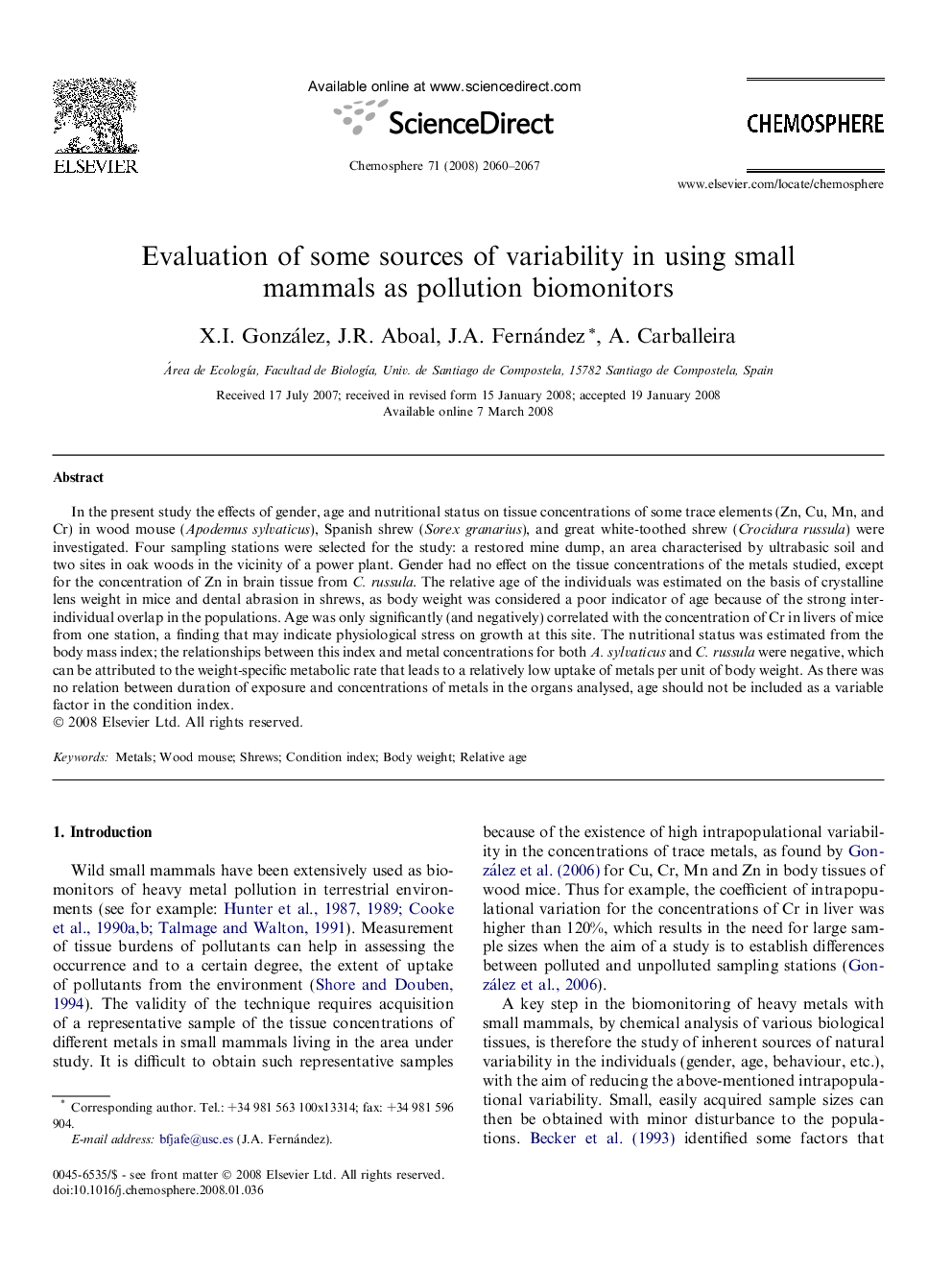| Article ID | Journal | Published Year | Pages | File Type |
|---|---|---|---|---|
| 4413698 | Chemosphere | 2008 | 8 Pages |
In the present study the effects of gender, age and nutritional status on tissue concentrations of some trace elements (Zn, Cu, Mn, and Cr) in wood mouse (Apodemus sylvaticus), Spanish shrew (Sorex granarius), and great white-toothed shrew (Crocidura russula) were investigated. Four sampling stations were selected for the study: a restored mine dump, an area characterised by ultrabasic soil and two sites in oak woods in the vicinity of a power plant. Gender had no effect on the tissue concentrations of the metals studied, except for the concentration of Zn in brain tissue from C. russula. The relative age of the individuals was estimated on the basis of crystalline lens weight in mice and dental abrasion in shrews, as body weight was considered a poor indicator of age because of the strong interindividual overlap in the populations. Age was only significantly (and negatively) correlated with the concentration of Cr in livers of mice from one station, a finding that may indicate physiological stress on growth at this site. The nutritional status was estimated from the body mass index; the relationships between this index and metal concentrations for both A. sylvaticus and C. russula were negative, which can be attributed to the weight-specific metabolic rate that leads to a relatively low uptake of metals per unit of body weight. As there was no relation between duration of exposure and concentrations of metals in the organs analysed, age should not be included as a variable factor in the condition index.
